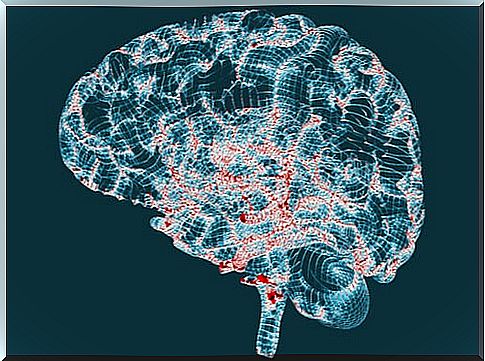What Happens To The Brain During A Panic Attack?

What happens to the brain during a panic attack can be defined in one sentence: it is hijacked by fear. After this statement, many may wonder, but … fear of what? As we well know, these types of experiences can be triggered in innocuous situations, at times where, at least in appearance, there is no threatening stimulus.
We could give thousands of examples of this type of situation, such as that of a young ordinary who takes the car to go to work. At one point, and while our protagonist waits for the traffic light to turn green, he feels like a feeling of anxiety takes over him. He cannot breathe, his heart is pumping with tremendous force and he, unable to maintain control, feels that he is about to die.
Panic attacks can appear without the need for a clear trigger. However, our hypersensitivity is there, the fear is always latent, fueled by an accumulated anxiety for weeks, months and even years.
The body reacts because our nervous system and, specifically, our brain, is over-activated in certain regions that mediate our emotional processing and learning.
They are very complex situations that have aroused the interest of neuroscientists for decades. Especially since, on occasions, these types of disorders appear in many families, but not in all of their members. Is there perhaps some genetic component or is it perhaps an exclusively environmental trigger? Let’s see more data below.

What happens to the brain during a panic attack?
We pointed out at the beginning, what happens to the brain during a panic attack is that it is subjected to a very powerful primary emotion: fear.
Thus, as a study carried out at the University of London by Dr. Dean Mobbs reveals, what would actually happen is that our defense mechanisms are over-activated. That is, we experience an inordinate and irrational fear of threats that are not always real (or are not potentially dangerous to our integrity or survival).
Now, there is an obvious fact, and that is that we are facing a psychological reality experienced by about 12% of the population. We must understand that panic attacks are nothing more than a symptom of something, an underlying condition mediated by stress and anxiety carried over time. Often many of us end up familiarizing ourselves with the feelings of anxiety, to the point of normalizing them and assuming that it is our way of being.
Until a day comes when our nervous system reaches the limit, and then, all that accumulated internal activation ends up manifesting in many ways, panic attacks being one of them. Let us know next what happens in our brain at this time.
The amygdala, the functional center of fear
The amygdala is a fascinating structure. We know that it plays a basic role in our survival (as in animals). We have also been clear for decades that it is she who generates the emotion of fear so that we react to the threats in our environment.
Now, something that scientists tell us is that what happens to the brain during a panic attack is that it is the victim of an over-activated amygdala. In other words, there is an excessive and excessive response to what we interpret as threats, whether they are real or not.

The insula, beyond fear: when panic strikes
Until not long ago we thought that the real culprit for our panic attacks was the amygdala. However, in recent years we have discovered that in reality, this region was not as decisive as we initially thought. In reality, there is another brain structure that places us in a state that goes beyond fear, one that intensifies it even more to place us in a state of panic.
We talk about the insula, another door to those situations where our emotions are triggered, where we lose control and where in addition to panic, we experience that bodily imbalance where dizziness and confusion arise.
What happens to the brain during a panic attack: midbrain, stop or run
The midbrain, also known as the midbrain, is a structure located in the upper part of the brain stem. According to Dr. Dean Mobbs, during a panic attack an area of this brain region is activated, an area called the periaqueductal gray matter.
This substance can contribute to generating two incompatible actions: that of fleeing or that of staying still to protect ourselves from a threat. Now, this zone is activated only when there is a very high level of anxiety.
The first panic attack and its emotional imprint
Anyone who has ever experienced a panic attack knows what happens next: the fear of having another one. The fact that this experience is so intense and disturbing is not by chance. So much so that, in a study conducted at the University of Ottawa, Canada, the authors point out that the physiological and emotional experience of that first attack leaves a deep imprint at the brain level.
This impact creates a new link, that of “fear of fear.” Suddenly, the fear of experiencing a new attack generates persistent anguish, which ends up increasing the probability of suffering it.
To conclude, these facts, these realities at the neurological level are as peculiar as they are striking, but if there is an important fact, it is that scientists know these mechanisms much better. In a short time we will have more effective treatments and more precise psychological approaches to give a better response to these limiting situations.










